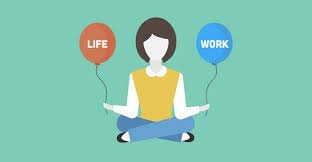Balancing Personal and Professional Responsibilities

In today’s fast-paced and interconnected world, achieving a perfect balance between personal and professional life has become a significant challenge for many individuals. The traditional concept of work-life balance, which suggests that work and personal life should be kept separate and equal, is evolving. Instead, a new approach called “work-life integration” is gaining popularity. This approach focuses on blending work and personal life in a way that allows individuals to effectively manage their responsibilities without feeling overwhelmed or stressed. In this blog post, we will explore the concept of work-life integration, its benefits, and practical tips on how to achieve it.
Understanding Work-Life Integration
Work-life integration is about harmonizing the various aspects of life—career, family, personal development, and leisure—in a way that complements each other rather than competing for time and attention. Unlike the traditional work-life balance, which often implies a strict separation between work and personal life, work-life integration encourages flexibility and adaptability. It acknowledges that life’s demands are dynamic and that a rigid approach to balancing work and personal life may not always be feasible or desirable.
Benefits of Work-Life Integration
- Increased Flexibility: Work-life integration allows individuals to have more control over their schedules, enabling them to accommodate personal commitments without compromising their professional responsibilities.
- Improved Well-being: By blending work and personal life in a harmonious way, individuals can reduce stress, improve mental health, and enhance overall well-being.
- Enhanced Productivity: When individuals feel supported and empowered to manage their work and personal responsibilities effectively, they are more likely to be motivated, engaged, and productive.
- Stronger Relationships: Work-life integration promotes better communication and understanding between family members, friends, and colleagues, leading to stronger and more fulfilling relationships.
Practical Tips for Achieving Work-Life Integration
- Set Clear Boundaries: While work-life integration encourages flexibility, it’s essential to set clear boundaries to prevent work from taking over personal time completely. Designate specific times and spaces for work and personal activities to create a sense of balance and structure.
- Prioritize Self-Care: Make self-care a priority by incorporating activities that promote physical, mental, and emotional well-being into your daily routine. Whether it’s exercise, meditation, or spending time with loved ones, find activities that recharge and rejuvenate you.
- Communicate Effectively: Open and honest communication with your employer, colleagues, and family members is key to successful work-life integration. Clearly communicate your needs, expectations, and boundaries to ensure everyone is on the same page.
- Utilize Technology Wisely: Leverage technology to your advantage by using tools and apps that help you stay organized, manage your time efficiently, and maintain a healthy work-life balance. However, be mindful of the potential pitfalls of technology, such as constant connectivity and information overload, and set boundaries to protect your personal time.
- Seek Support When Needed: Don’t hesitate to seek support from your employer, colleagues, friends, and family members when needed. Whether it’s delegating tasks at work, asking for help with household chores, or seeking professional guidance, know that it’s okay to ask for help and support when balancing multiple responsibilities.
Conclusion
Work-life integration offers a more flexible and adaptable approach to managing the complexities of modern life. By embracing work-life integration and implementing practical strategies to balance personal and professional responsibilities, individuals can enjoy improved well-being, enhanced productivity, and stronger relationships. Remember, achieving work-life integration is an ongoing journey, not a destination. Be patient with yourself, prioritize self-care, and continuously evaluate and adjust your strategies to find what works best for you.






Responses